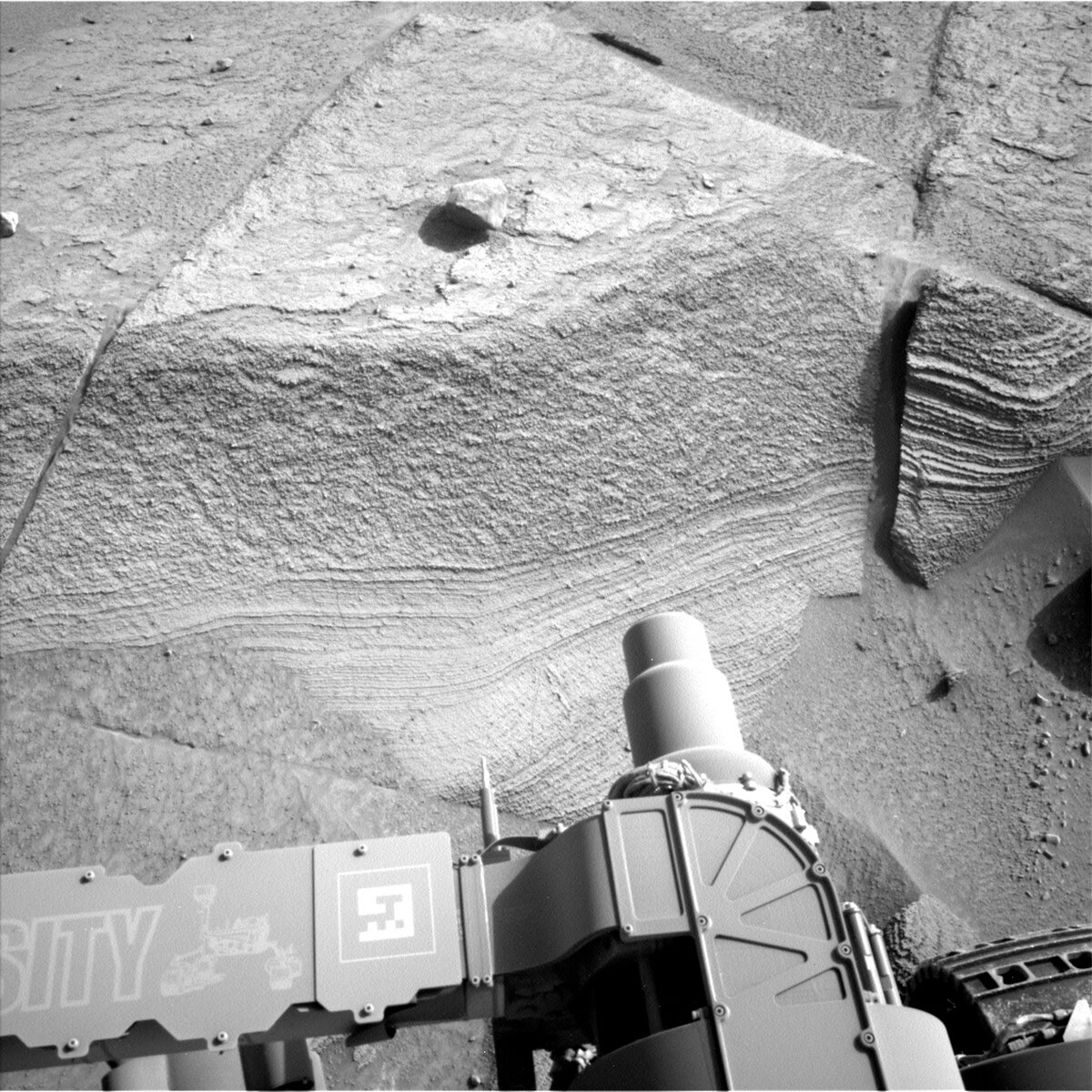2 min read

With a jam packed three-sol plan on her plate, Curiosity won’t have time to kick back and relax this weekend! The rover is heading south across the Marker Band and is currently sitting in front of a lovely view that includes a contact between two types of bedrock. The lower section of bedrock consists of very thin, horizontal layers, as though you were looking at the edge of a thick stack of construction paper. Above, the bedrock appears rougher and bumpier and is not finely layered. Over the weekend, Curiosity will analyze both of these bedrock sections, below and above the contact, because this abrupt change in appearance may help us understand how the environment evolved over time.
The weekend plan will utilize several instruments to characterize the bedrock, including DRT, APXS, MAHLI, and multispectral activities of the “San Rafael” target in the lower section, and the “San Francisco de Yuruani” target in the upper section. A MAHLI mosaic of target “Santa Elena de Uairen” will stretch vertically across the two types of bedrock. ChemCam LIBS will analyze the “Pico del Toro” target in the lower section and the “San Francisco de Yuruani” target in the upper section. Mastcam will document the contact in the workspace as well, in addition to taking a stereo image of target “Iurua” to get a closer view of an interesting rock sitting on the surface nearby.
Once Curiosity wraps up this long list of science activities, the rover will complete a short drive toward a nearby bedrock outcrop, stopping to take a look at a “foreign” stone (a rock that looks different than the surrounding bedrock). Monitoring of environmental conditions will continue over the weekend with a survey for dust devils and observing the dust in the atmosphere.
It was wonderful to see so many science team members at the Lunar and Planetary Science Conference this week in Houston. We have so much to celebrate after ten years of exploration with the Mars Science Laboratory Rover Curiosity and so much to look forward to on the road ahead!
Written by Sharon Wilson Purdy, Planetary Geologist at Smithsonian National Air and Space Museum







